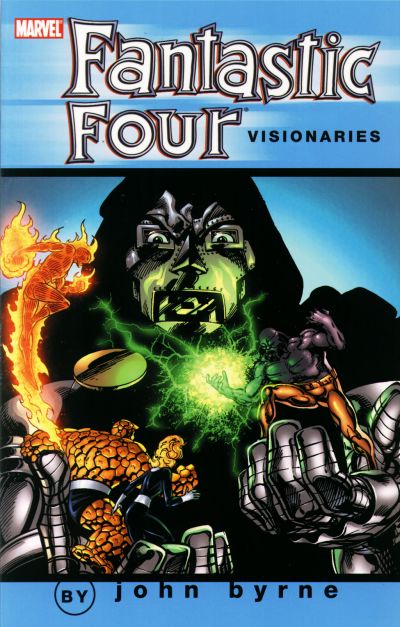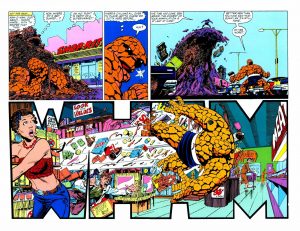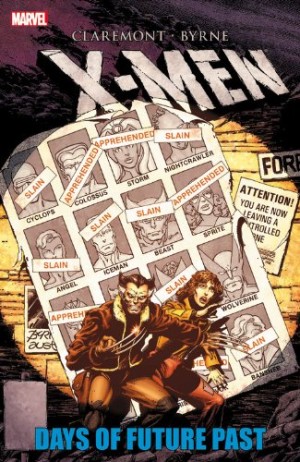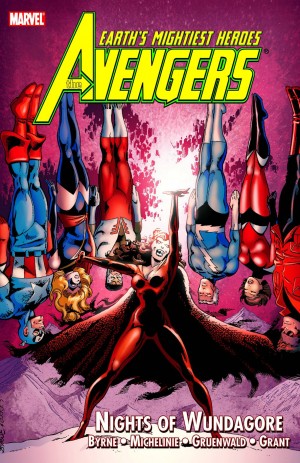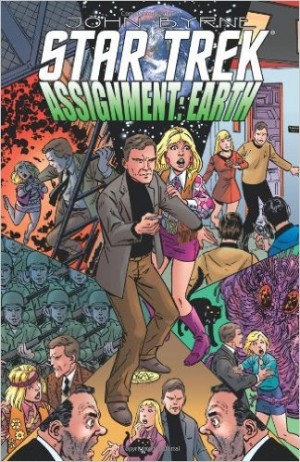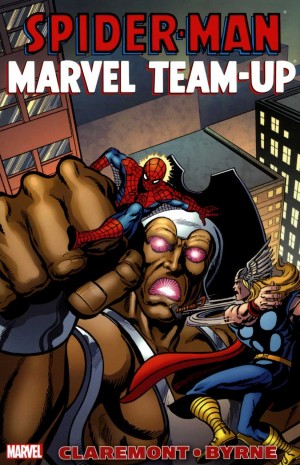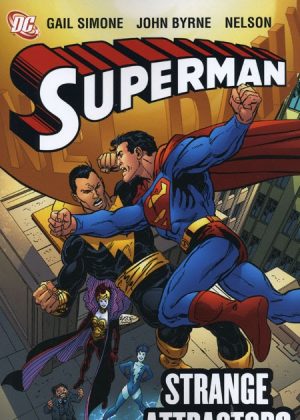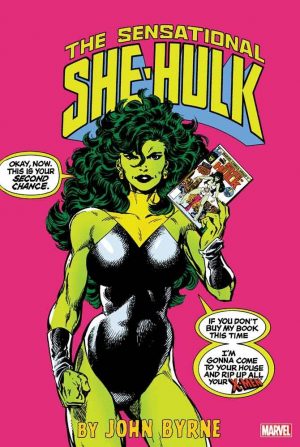Review by Tony Keen
Spoilers in review
The collection of John Byrne’s five-year run on Fantastic Four here reaches the midway point, with comics from 1983 and 1984. However, it could be argued that the high-water mark of his run is actually contained in the previous volume.
Not to say that these stories are in any way bad. We begin by temporarily overlooking the cliff-hanger at the end of volume 3, the disappearance of Reed Richards. Instead the remaining members are plunged into a battle against Tyros – formerly Terrax the Tamer, Herald of Galactus, whom Byrne had designed in one of the first FF comics that he drew. This is excellent, with Sue Storm adapting well into leading the FF. It also features some very effective colouring by Glynis Wein, some of the best of her career. There is a twist hinted at at the end of this episode, one that long term Fantastic Four readers will easily spot. Byrne then brings back the Sub-Mariner, before finally tracking down Reed Richards in the story that can also be found as the climax of The Trial of Galactus. The volume concludes with a tale that tragically ends Sue Richards’ second pregnancy, into which Byrne fits a flashback narrative that once again shows Sue in a fine light – at this point Byrne is clearly finding Sue more interesting than any of the other characters.
Along the way Byrne continues to keep the title dynamic and ever-changing. Here Reed and Sue move to Connecticut and take up secret identities, while the Thing is replaced on the FF’s roster by She-Hulk.
At the time this seemed like Byrne delivering another set of good material, but in retrospect, the shine is starting to fade. After the nuanced, if crypto-fascistic, version of Doom as leader of Latveria seen earlier (reprinted in volume 2), it is a little inconsistent to see him revert to murderous ways here. The end of the trial of Reed Richards is too cod-mystical to be convincing. The villain in the flashback, Karisma, is less than inspired, and a bit sexist.
Part of the problem is that the corporate direction of Marvel was really interfering with individual titles. The first of the great cross-over “events”, Secret Wars, ties in, and precipitates Ben Grimm’s leaving and Jennifer Walters joining the team. The trial of Reed Richards was published during the 1984 “Assistant Editors’ Month”, where Marvel played out a joke about all the regular editors being at the San Diego Comics Convention, and allowing their assistants to get up to all sorts of “wacky” stuff while not properly supervised. In the FF, this was manifested as Byrne becoming a character in the comic’s pages.
Addtionally, there’s also a sense that Byrne was no longer at his best. By the time of the last of the tales collected here, he had been writing the series for three full years, and his FF was no longer as fresh and different as at the start; Byrne was not innovating as he once was. He also was over-committed – when he began writing and drawing FF, it was his main project and accorded all his attention. By this time, however, he was also writing the Thing’s solo series, and (somewhat reluctantly, by all accounts) writing and drawing Alpha Flight. Crossovers with both titles are included here. The wheels have not yet fallen off Byrne’s FF wagon, but if one looks closely, they are wobbling a bit.
